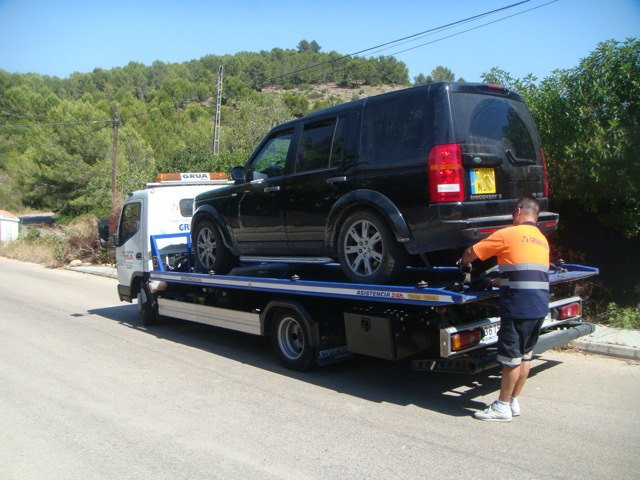Land Rover and JD Power

Some things never change. Lying politicians, for example. And racist YouTube commenters. But also the JD Power Long-Term Vehicle Dependability Study, which was just released for 2013. Like always, Lexus and Lincoln were near the top, proving that old people can’t figure out in-car computer systems well enough to give them low ratings. Porsche was also near the top, proving that at least one German brand still has some idea what it’s doing.
Of course, you already knew who topped the JD Power study because it was covered by every other website, including your local news affiliates, which have those annoying banner ads that expand as the page opens. Note to advertisers: no one in human history has ever willingly clicked on one of those ads, or will ever click on one of those ads, or will ever buy a product just because their screen was briefly invaded by one of those ads. Unless, perhaps, the ad is touting Lincoln’s placement in the latest JD Power survey, and the reader is an old person.
What your local news probably didn’t cover, however, is another aspect of the JD Power survey that never changes: Land Rover’s position. You see, for the umpteenth year running, Land Rover displayed its unending commitment to quality by finishing dead last. And since we’re doing our part to tell the truth about cars, I felt it was my duty to cover this automotive milestone.
The Study
Before we go any further, it’s important to understand how the study works. There are two ways you can do this: one, you can read JD Power’s explanation, as I did, which is “summarized” in a 1,500-word press release that includes an embedded video and uses the word “vehicle” 38 times. In fact, the word “vehicle” appears as often as the word “of.” Truly.
Your second choice is to just read my explanation.
Are you with me? I thought so.
JD Power has two commonly reported vehicle studies, both of which Land Rover traditionally wins, provided you hold them upside down. One is the Initial Quality Study, which measures problems in the first three months of ownership. The one being discussed here is the Long-Term Vehicle Dependability Study, which measure problems in the first three years of ownership. That means this study is looking at 2010 models, which explains the Ford Ranger’s appearance.
To collect reliability data, JD Power surveys thousands of vehicle owners. Once it has the numbers, JD Power tallies things up based on the number of problems, on average, faced by 100 vehicles over three years. This is pretty self-explanatory, or – if you’re JD Power – it requires a nine-minute video explanation from a guy whose hair is parted in the middle.
One last word on JD Power’s study: the definition of “problem.” According to the study’s methodology, a problem can be one of two things: either an actual issue faced by the vehicle, or something the customer just doesn’t like. Maybe you think there’s too much wind noise, for example. Problem. Or maybe you think the cruise control stalk looks phallic. Problem. We’ll get to the impact of this definition on Land Rover in a minute.
How did Land Rover do?
I’m not going to sugarcoat it: Land Rover had 220 problems per 100 vehicles. The average TTAC reader might be saying, “That’s not so bad over three years! My Crown Vic leaks water every time it rains through the holes for the light bar!” or possibly, “We’re 600 words into this and you haven’t made a joke about Land Rovers and fire yet?”
To them, I say: for perspective, Lexus had only 71 problems per 100 vehicles. And we know most of Lexus’s problems stemmed from the owner’s manual font size being too small, while most of Land Rover’s were because the towing eye is difficult to locate in the vehicle’s charred remains. Boom – there it is.
It gets worse. While most brands were separated by one or two problems per 100 vehicles, Land Rover was 30 problems behind the next-worst brand, Dodge. That means Land Rover would have to trim 30 problems per 100 vehicles – or nearly half of Lexus’s entire score – in order to become second worst.
Most importantly, this is not exactly uncharted territory for Land Rover. I went back through the last few Vehicle Dependability Studies and discovered that Land Rover typically ends up in one of three places: dead last, damn near last, or not included because the sample size wasn’t large enough. One year, they had 344 problems per 100 vehicles. Truly.
Is it really that bad?
Beyond customer satisfaction, Land Rover’s resale value is most affected by its reliability woes. No one keeps a Land Rover beyond the warranty period, meaning the market is full of three-year-old Land Rovers with ticking time bomb suspension, electricals, engines and transmissions. Between the abundance of used models and the obvious potential pitfalls, used-car shoppers stay away.
Most people think car companies don’t care about resale value, but there’s one big reason they do: leasing. Remember, leasing a car is basically paying the depreciation for the period you own it, plus a little profit for the automaker. If the car depreciates substantially, one of two things rise: either lease payments or manufacturer subvention. Both are bad news for car companies. Just ask the king of depreciation, Jaguar, whose latest XJ sedan is already in the $40k range on the used market.
But I see Land Rovers everywhere!
And that’s the rub. While you and I view the above as fodder for jokes, there are two highly important camps who don’t really care what we think. That would be Land Rover North America, and Land Rover owners themselves. Land Rover North America doesn’t care because even with the problems and the effect on lease business, they still sell every SUV they make. Except, of course, the LR2, which may exist solely to provide transportation for service customers. Land Rover owners don’t care because they just want to drive a car they think is cool; damn the issues.
The interesting thing is that, given JD Power’s methodology and Land Rover owner attitudes, you’d expect the brand to do better on JD Power’s studies. You’d think, for example, that a Land Rover owner would be willing to overlook a little wind noise here, or a vehicle fire there, just because they love the product.
But the bad survey scores say that isn’t the case. They know about the problems, yet they buy Land Rovers anyway – purely because they like them. In fact, it’s sort of like how you bought that Crown Vic with the holes in the roof.
Maybe you have more in common with the average Land Rover owner than you think.

More by Doug DeMuro
Latest Car Reviews
Read moreLatest Product Reviews
Read moreRecent Comments
- Jrhurren Worked in Detroit 18 years, live 20 minutes away. Ren Cen is a gem, but a very terrible design inside. I’m surprised GM stuck it out as long as they did there.
- Carson D I thought that this was going to be a comparison of BFGoodrich's different truck tires.
- Tassos Jong-iL North Korea is saving pokemon cards and amibos to buy GM in 10 years, we hope.
- Formula m Same as Ford, withholding billions in development because they want to rearrange the furniture.
- EV-Guy I would care more about the Detroit downtown core. Who else would possibly be able to occupy this space? GM bought this complex - correct? If they can't fill it, how do they find tenants that can? Is the plan to just tear it down and sell to developers?





































Comments
Join the conversation
Someone has got to be the worst. It's usually Jaguar or Land Rover.. But all cars are crazy reliable compared to the 80s when I grew up. My dad had a Renault Alliance.. That thing didn't even make in 30,000 miles. I think most cars are pretty darn reliable when you consider how hideously complicated they are.
Hey, I'm old and I part my hair in the middle. Screw you, Dougie.